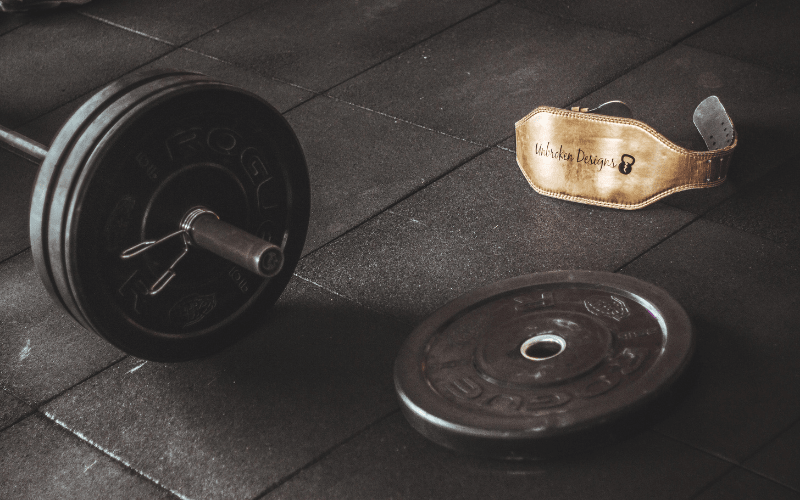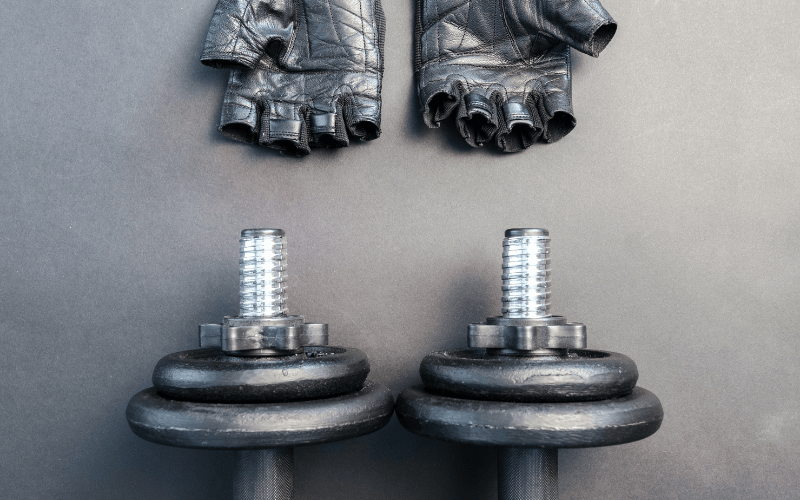

Whether you are just starting your weight training journey or starting over, this article focuses on developing and maintaining a healthy weight training routine with an emphasis on what works best for you.
Many gyms see new clients come and go. There can be a variety of reasons for this, but very often it’s because we lose motivation and perhaps lack the education to remain consistent.
Below you will find basic tips for any weight training beginner. These fundamental tips will not only help you to kickstart your weight training journey but will also assist with progression and maintaining it for the long haul.
TIP NUMBER 1: Start with why

As Simon Sinek said: “Start with why”.
By writing down an answer to this very basic question, you are setting yourself up for success. Why do you want to start your weight training journey?
Whether it is to build muscle, lose weight or simply achieve a more toned body, there is no right or wrong answer. It revolves around you and what will keep you motivated when things get tough. Weight training, as with any exercise, is a great way to stimulate your mind, relieve stress and depression, boost your self-esteem, and help to maintain an overall healthy lifestyle. These are just some of the benefits you will be experiencing when practicing a disciplined gym routine.
Guaranteed, your motivation will fade, but you need to rely on your self-discipline in order to make this a long-term habit. Whenever you don’t feel in the mood for training, remind yourself why you started in the first place and remember the positive benefits it can have on your body and mind.
TIP NUMBER 2: Baby steps

As with anything, the first step is always the hardest. This first step could be to join the local gym and show up on your first day. In the beginning, focus on building a routine rather than achieving results. Remember that you are trying to create a lifestyle and not apply a quick fix.
In the first week go to the gym and only spend 15 – 30 minutes per session.
As an example: you can start by doing only 1 – 2 sets per exercise with a total of 5 exercises per session. Keep in mind that your body will not be used to these movements and you are slowly warming your muscles up towards weight training.
Concentrate on doing extensive and full range movements with emphasis on proper form. Avoid getting too focused on how much weight you are able to lift, and instead focus on the quality of movement.
TIP NUMBER 3: Learn basic gym terminology/jargon

Rep – One motion or “repetition” of a specific movement. For example: When doing bicep curls, the movement of lifting and lowering the weight will count as on “rep”.
Set – A “set” is made up of a series of reps. One “set” normally equates to 6 – 12 reps. For example: If a training program says “3 sets of 10 reps” you will perform 10 repetitions three times – usually with a short rest between each set of 10.
Weight - Is the amount of resistance you're lifting. Lower reps usually require heavier weight and higher reps mean you need to lift lighter weight.
Volume - Measures the intensity of a workout, and is determined by how many exercises, sets, and reps you complete.
One repetition maximum (One rep max) – This is the largest amount of weight an individual can lift for only one repetition.
Dumbbell – A short metal bar with a certain amount of weight on each end. One normally uses pairs of dumbbells to train. This is normally held individually by each hand.
Barbell – A long metal bar where discs of weights are attached to each end.
Compound Exercises - Multi-joint movements that require more than one joint to perform the exercise. For example: a bench press uses the elbow and shoulder joint.
Isolation Exercises - Single-joint movements that only require one joint to perform the exercise. For example: a bicep curl only uses the elbow joint.
Supersets - Completing two exercises back to back with no rest in between the exercises.
Positive Phase - Lifting phase of the exercise. For pull exercises, you will be lifting the weight towards you and away from you for pushing exercises.
Negative Phase - Lowering the weight or controlling the relaxation phase. For example: controlling the bench press as you bring it to your chest.
Sticking Point - A point in the positive phase when the weight you are lifting loses momentum and is at standstill. For example: when you're doing a pullup, stalling halfway through.
Contraction - The muscle is engaged and contracted to apply force to push or pull.
Spotter - Someone who watches over you as you are performing a set to failure, and is there to help you lift the weight back to starting position if your muscles fail during the rep.
Calories – Units of energy that relate to energy intake and expenditure.
TIP NUMBER 4: Don’t compare yourself to others

When starting to visit the gym you will notice individuals that are extremely fit, muscular, and well built (always keep in mind their journey also had to start with "why"). Don’t let this discourage you, instead let it motivate you.
Remember: A few months ago, the majority of them started off just like you. No one gets born with a big muscular and toned body. You cannot compare your chapter 1 to someone else’s chapter 20. It comes with time, consistency, and hard work.
TIP NUMBER 5: At the click of a button

Too broke for a personal trainer? You can become your own personal trainer with a few Internet searches. EVERYTHING you might want and need to know regarding weight training can be found on the Internet.
There are extremely helpful sites such as Bodybuilding.com, Muscular Development, T-Nation, and the most practical: Youtube.
These websites have all the information you need in terms of workout plans, nutritional advice, supplements, news, and forums. Simply spend a few minutes educating yourself before starting a workout.
Try different workout plans, supplements, exercises, and routines in order to find what works best for you. Experience (and in this case, muscle) is built by trial and error - and let's not forget EDUCATION. Try to change your workout and meal plan every 5 – 6 weeks to ensure your results don’t plateau.
Always remember to check with your doctor first before starting any new exercise or meal plan. There is a wealth of helpful information on the Internet, but there is just as much misinformation out there. Be mindful of what you read online and always make sure you are visiting reputable sites with articles written by trained professionals.
TIP NUMBER 6: Build a routine

As stated at the beginning of this article, concentrate on building a strong routine. Some days your performance will be down and you will not get the same "pump" as you did the previous week. This is totally fine, but don’t let it discourage you from showing up the next day.
If your muscles are sore, you have an injury or you are just not in the mood to train – you should still make the effort to go to the gym. Walk on the treadmill, enjoy an easy cycle or experiment with some light weights and new machines, but don’t break your routine. Stay disciplined and focused on your goals.
Once you start skipping gym it becomes a habit and it is easier to miss more sessions. Any form of training has various mental and physical benefits. The habit of going to the gym will show self-discipline which can also extend to other aspects of your life.
TIP NUMBER 7: You cannot out-train a bad diet

Nutrition is a huge component if you are weight-training to achieve a certain physique. The way you look depends on what food you are eating, the quantity you are eating, and the frequency you are eating. All this information can be very overwhelming when you first start weight training.
Meal plans you find online or that you obtain from a nutritionist show you which food you should eat, how to prepare them, what size portions, and more. However, with regards to losing or gaining weight, it can be very simple. To lose weight, you need to be eating fewer calories than your body is burning, and if you want to gain weight you need to eat more calories than your body is burning in order to facilitate muscle growth.
Aim to include foods that are good sources of protein, carbohydrates, and healthy fats. Protein is the building block for strong muscles, carbohydrates will fuel your workouts and healthy fats should be consumed in moderation to maintain healthy joints and fat-soluble vitamins.
Examples of lean protein sources: egg whites, chicken breast, low-fat yogurt, milk, beef, tuna, protein powder.
Examples of complex carbohydrate sources: oats, sweet potato, butternut, green beans, brown rice.
Examples of healthy fat sources: olive oil, nut butter, seeds, avocado.
Yet again it is important to educate yourself and experiment until you find something that works for you. It’s not worth eating like a professional bodybuilder if you are not planning to stand on stage in the near future. This is not sustainable and will just demotivate you in the long run.
TIP NUMBER 8: Supplements

If you are someone who is new to weight training, supplements will not drastically improve your performance or progress. Supplements definitely have their benefits, but they will not make or break your journey as someone starting out in weight training. Also, note that supplements and shakes cannot replace a well-balanced diet and should only be used on top of proper nutrition and a good training schedule.
There are countless products out there that have their benefits, but it comes down to which one will work for you and assist you in achieving your goal.
If you are trying to gain some muscle and weight, try including a mass builder in your diet, which contains a high percentage of carbohydrates to help you increase your calorie intake and protein to facilitate lean muscle growth.
If you are trying to build lean muscle a basic whey protein should be just fine. After your first month of constant training and you are ready to start increasing your weights, you could look to include creatine in your overall supplement stack. Creatine is a great entry-level supplement to improve performance, endurance, strength, recovery, and muscle size.
Additionally, you should never underestimate the importance of vitamins. Purchase a good multivitamin to fill nutritional gaps and make sure you obtain your daily requirement of nutrients like vitamins A, C, D, E, and K, calcium, magnesium, dietary fiber, choline, and potassium.
TIP NUMBER 9: Fall in love wiTH training, and not only the results

Initially, you may start your weight training journey to see results, but in order to make the habit stick, you’ll need to find ways to love the process even when your progress becomes slower.
To become successful in something you need to be consistent. In the beginning, you will witness results very quickly and as the months go by you might notice that your progress becomes slower. At this point, many people fall off the wagon – but the difference between someone who reaches their fitness goals and someone who doesn't is CONSISTENCY.
Any form of training has major long-term benefits to your health and overall well-being. When practicing a solid exercise routine, the discipline you need to apply can escalate to other aspects of your life. You can experience improved memory and brain function, improved mental health, and mood, improved quality of sleep, reduced anxiety and depression, and an increase in your self-confidence. Overall, it will increase your quality of life and help you to enjoy going to the gym.
Final Thoughts
Weight training can be very intimidating at first. It is important to understand why you want to start weight training and to set clear goals for yourself. At the beginning of your weight training journey, you don’t need to get a personal trainer and spend large amounts of money on supplements. It is important to educate yourself and learn what will work best for you through trial and error.
Do not compare yourself to others and try to fall in love with training and a healthy lifestyle instead of only focusing on the results.
Training regularly can have many benefits on other aspects of your life. Once you have started, stay true to your goal and routine. Maintaining a disciplined routine, educating yourself, and staying focused will make or break your weight-lifting journey. Remember to start slow and that in order to see results you need to remain consistent.
Happy lifting!

